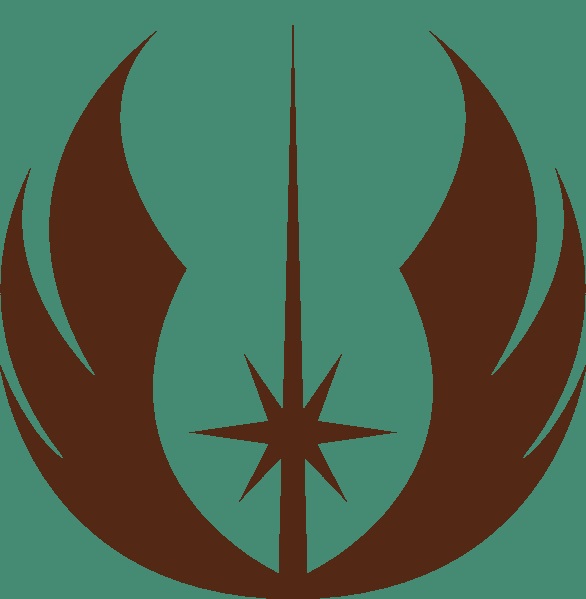| ARC-170 Starfighter: |
|---|
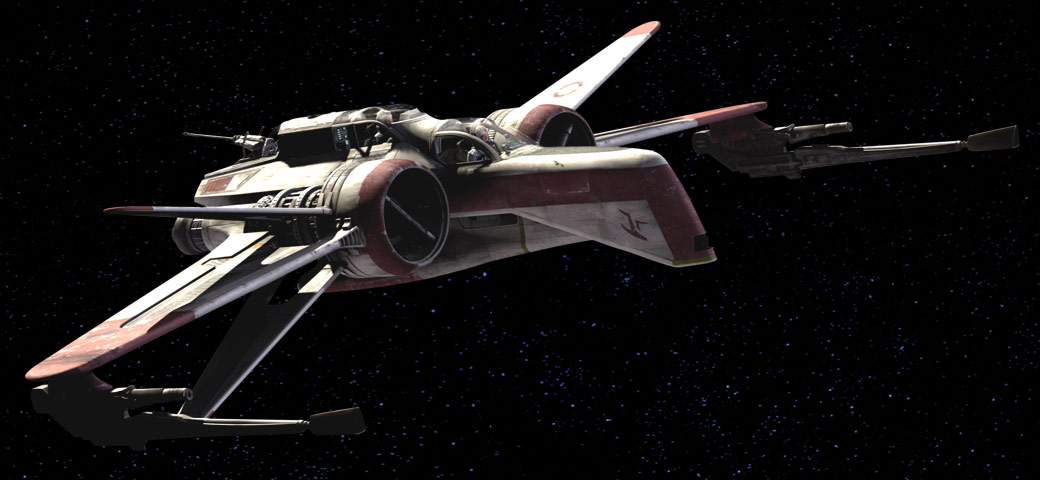 | | Production Information: |
|---|
| Manufacturer: | Incom Corporation;Subpro Corporation. |
|---|
| Model: | ARC-170 Aggressive ReConnaissance starfighter. |
|---|
| Class: | Starfighter/bomber. |
|---|
| Cost: | New: 18.3 millioncredit;Used: 5.8 millioncredit. |
|---|
| Technical Specifications: |
|---|
| Length: | 47 feet 61/2 inches (XXm). |
|---|
| Wingspan: | 74 feet 1.75 inches (XXm). |
|---|
| Clearance (height): | 15 feet 9 inches (XXm). |
|---|
| Maximum Acceleration: | 2,600 G. |
|---|
| Megalight (MGLT): | 100. |
|---|
| Atmospheric Speed: | 622 mph (XXk/h); higher speeds with deflectors. |
|---|
| Hyperdrive Rating: | Class 1.5. |
|---|
| Hyperdrive Range: | 5,000 LY. |
|---|
| Shielding: | 5 times 101⁶ W. |
|---|
| Countermeasures: | Sensor jammers. |
|---|
| Armament: | Forward-mounted medium laser cannons (2);Rear-mounted laser cannons (2);Proton torpedo launcher (1); 6 torpedoes. |
|---|
| Crew: | Pilot;Co-pilot;Gunner;Astromech droid (1). |
|---|
| Passengers: | Normally none. |
|---|
| Cargo Capacity: | 110 kg. |
|---|
| Consumables: | 5 days. |
|---|
| Other Systems: | S-Foils;Field Kit. |
|---|
| Usage: |
|---|
| Roles: | Heavy Starfighter;Bomber. |
|---|
| Year Introduced: | 20 BBY. |
|---|
| Eras: | Republic Era;Rebellion Era;New Republic Era;Current. |
|---|
| Affiliations: | Galactic Republic;Ancient Empire;Rebel Alliance;PMC's;Pirates and raiders;Local Defense Forces;RDF's;REF (extensive). |
|---|
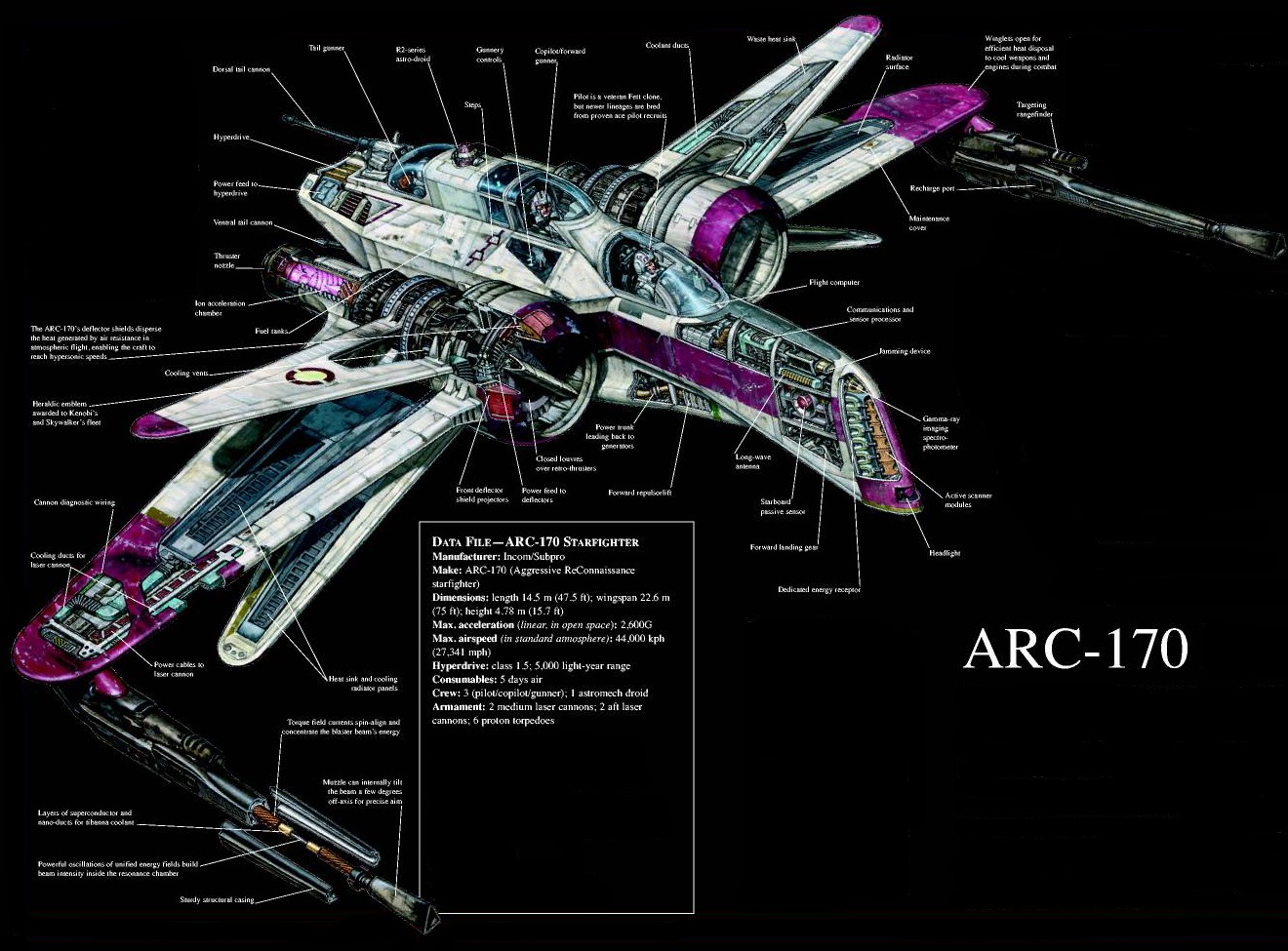 |
|---|
| ARC-170 Cross-Section. |
|---|
The "Aggressive ReConnaissance-170 starfighter," also known as the "ARC-170 starfighter" and "Advanced Recon fighter," is a heavy starfighter/bomber that saw widespread use by the Republic Navy in the later days of the Clone Wars. It was an ancestor of the T-65 X-wing starfighter, which would be mainly used by the Alliance to Restore the Republic.Some textbooks consider the ARC-170 a heavy starfighter, others a medium bomber. Early versions were armed with multiple missile launchers.CharacteristicsDesignThe ARC-170 was jointly produced by Incom and Subpro Corporations. Like their other starfighter designs of its time, such as the lighter Z-95, and the heavier PTB-625, and NTB-630, the ARC-170 had a narrow spaceframe flanked by large engines. The ARC-170 also possessed an S-foil system, which helped to radiate heat, something that aided the fighter's shielding. This also provided additional stability during atmospheric flight.Using its front deflector shield projectors to disperse heat generated from air resistance, the ARC-170 could reach supersonic speeds in atmospheric flight.The ARC-170 was a departure from other starfighter designs of the Clone Wars era. Fighters such as the Alpha-3 Nimbus and the Eta-2 Actis were built to be small, fast, and maneuverable, at the cost of heavy weapons, shields, and hyperdrives. On the other hand, the ARC-170 was large, rugged, and capable of long independent operations.Military RoleThe ARC-170 was often sent on dangerous scout missions and raids deep in enemy territory. To allow the ARC-170 to perform these missions, the fighter was equipped with a Class 1.5 hyperdrive, and its nose was filled with powerful sensors, scanners, and jammers.The ARC-170 carried enough consumables for five days of operation. However, the supplies and additional equipment had a price and the ARC-170 was quite slow. Durable armor and shielding, as well as two tail guns, helped the ARC-170 to survive when surrounded by sWarms of smaller, faster enemy fighters, although it remained vulnerable to enemy anti-fighter guns.WeaponryThe ARC-170 possesses powerful weaponry; Twin heavy laser cannons and the L-15b rail launcher with a significantly expanded capacity makes it a very heavy hitter by any measure.The ARC-170 is crewed by three people and a droen: A pilot and co-pilot who conrol the forward weapons, and a tail gunner who operates the rear-mounted cannons. The fighter also carried an astromech droid to perform onboard repairs and navigation. | | Front view of an ARC-170. |
|---|
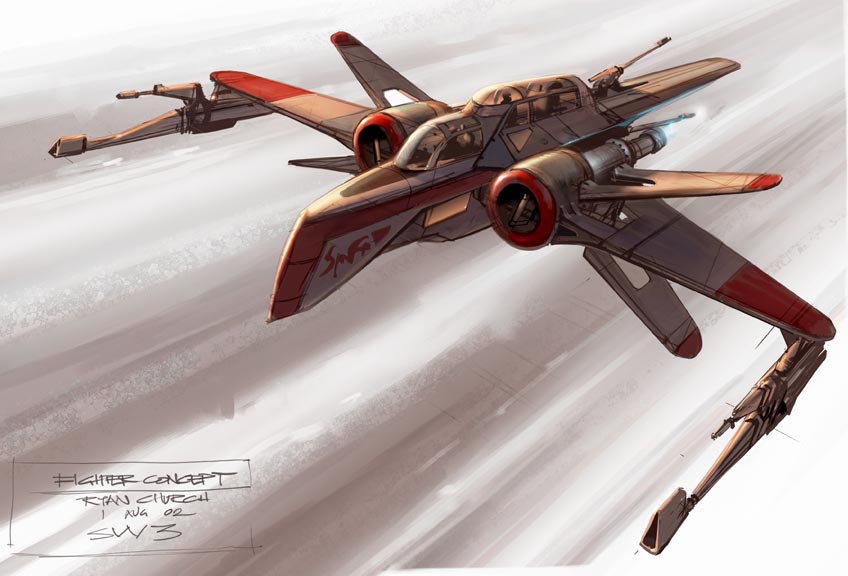 | 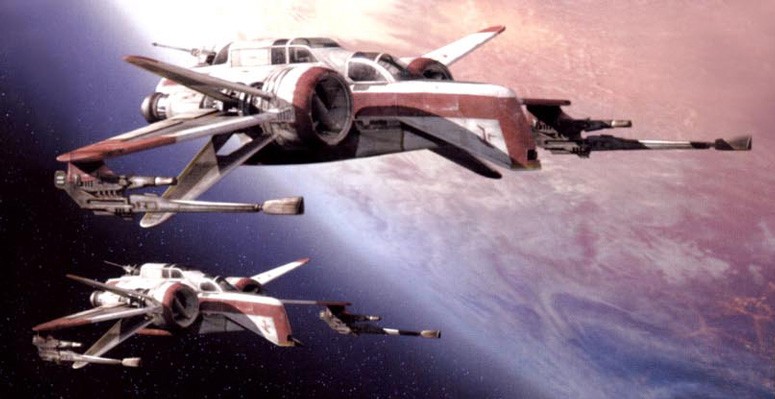 | | ARC-170 Concept Art. | A Pair Of ARC-170s Over Coruscant. |
|---|
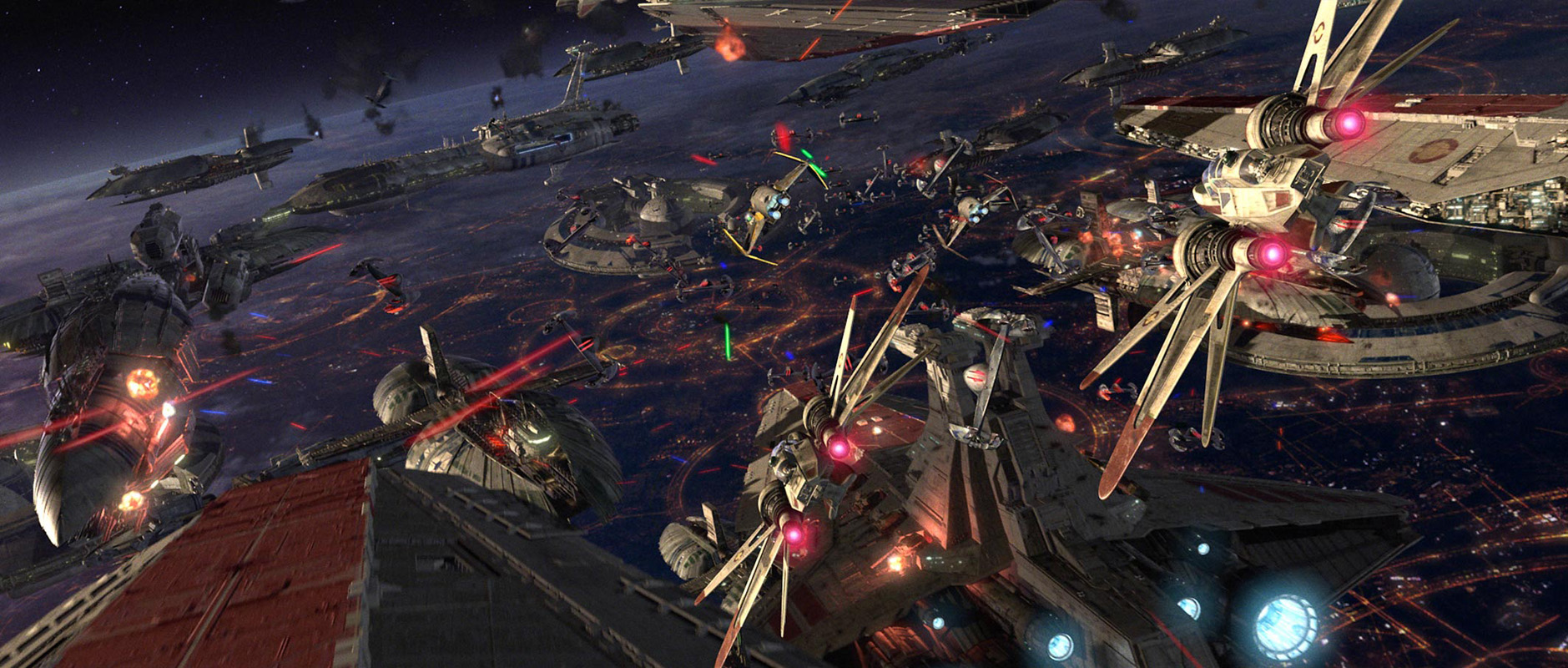 | 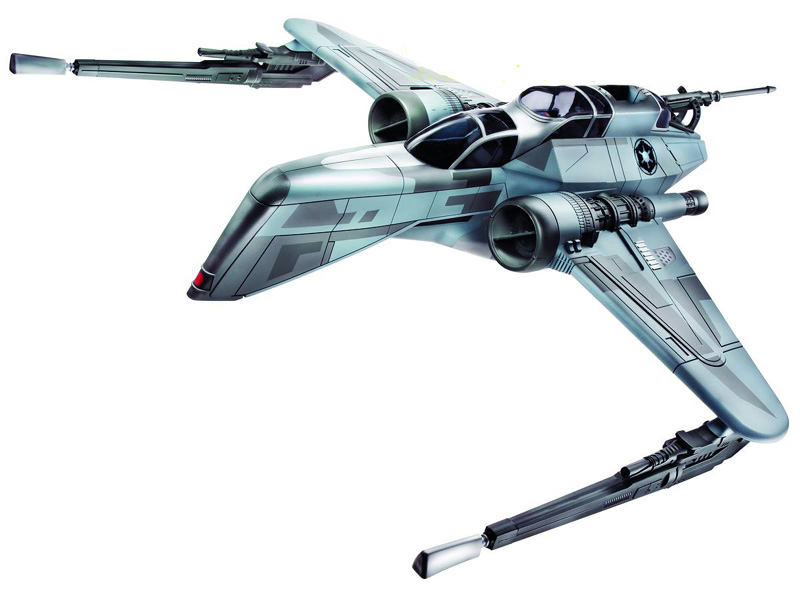 | | ARC-170s During The Battle Of Corscant. | An Imperial ARC-170 Fighter With S-Foils Retracted. |
|---|
CustomizationDuring the Clone Wars, it was common for elite pilots to customize their vessels with elaborate designs, such as the elite Razor Squadron. At the close of that War, these were de-authorized and all were painted a battleship grey scheme. The New Galactic Senate reversed this policy, though these fighters were by then laregely out of service, and the UGC specifically reversed them; Though each squdren is required to follow their service's painting sceme (meaning RDF's have to follow RDF painting schemes), they are also required to have a squadron isnsignia that is clearly visible from any angle. Some CDF's interpreted the rule as allowing that the paint scheme itself serving as identification, a act the REF has refused to try to stop (despite a few requests to the contrary), since "As great grammy used to say, it's not stupid, and it works" (UGC ASF Mj. General Alen HUNTER-HORNT, Rick and Lisa HUNTER'S great great granddaughter).HistoryClone WarsARCs were used fairly extensively the late Clone Wars.During the Battle of Corscant, Clone Flight Squad Seven (operating with ARC-170s) wer used to destroy a Sepreratist flagship, the Invisible Hand, suffering heavy casualties by droid tri-fighters in the battle, but succeeding in both the preliminary rescue and follow up search and destroy missions.Forgotten (or "Ancient") EmpireThe so-called "Clone War" was in fact the First phase of a lager conflict to seize power by a Syhith faction, and succeeded immensely; The forces that the Boganists had created to cause the conflict, having been eliminated by the forces the Boganists had created to deal with the threat, then eliminated the powerful Geh 'Dia Order and others that stood before their plans to seize power. One of the simplest ways to do so was to destroy the ships that the various "disloyal" senators were aboard, under the pretext of defending the Republic. ARC-170s executed these missions flawlessly; Of the 2,000 or so ships targeted, only about 20 fighters were destroyed.Through the civil War that followed, ARC-170s could be found in both Imperial and Rebel fleets, where they were considered elite craft. As with all craft commissioned by the new Empire, ARC-170s were henceforth given the standard 'Imperial gray' color scheme, doing away with the variety of colorful markings that militry vessels bore to identify their squadron affiliations with during the Clone Wars. Incom would go on to produce the T-65 X-wing starfighter, the successor to the ARC-170, but many squadrons of ARC's continued to fly, and the rebels continued building them as did the Empire, despite the advent of the TIE series, until the TIE Bombers ended the Empire's use of the ARC- But not the Rebels.The Amnesia EraAs is so often the case, not much is known about the ARC during the Amnesia Era. The battle that marked the general start of the Amnesia did include significant numbers of ARC's, their remains literally clogging the site of the apparent final conflict to a degree that basic navigation becomes hazardous, with markings of both side identified but of Ashalnists being overwhelmingly more common (by an order of 1,000 to 1).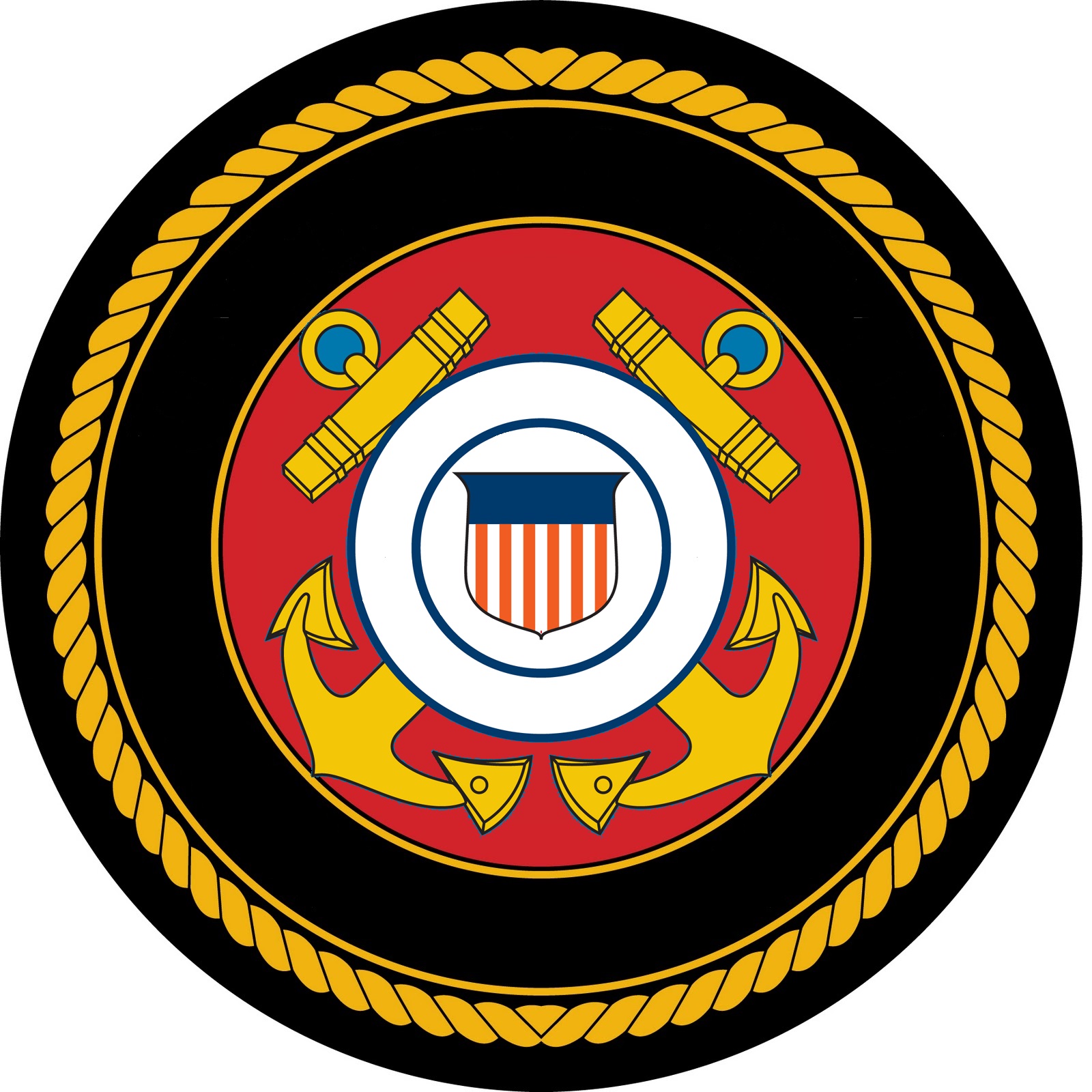 UGC EraThe UGC bought up all the old ARC-170's they could find mainly to relieve the local defense forces and other allied groups of the craft, freeing them up to purchase newer aero-space craft; However, in a light bomber/support role, the REF Marine found it excelled, especially in pinpoint strike missions (such as destroying bunkers, etc.). One squadron, 227TH Bomber Group, was formed around the ACR-170 as a self-contained strike bomber group available for forward deployment- They even got their own VEROCHA-Class ship, one of the relatively few that is owned by the Marine, but manned exclusively by the Patrol, thus carrying the "Cutter" designation, UGPC MUNROE (WHC-225), making her very oddly blue hulled, but with the Patrol's red white, and blue racing stripe (with the white and red reversed), and a unique Marine/Patrol combination emblem. The success both of this squadron and of the inter-service joint venture led to other related programs; The Aero-Space Forces took on 2,000 ARC's in an Aero-Space Force dubbed "Section Bravo," manned by multi-platform qualified pilots capable of switching around to meet the deployment needs (a significant number are actually RDF pilots tasked to the REF). The Spacy formed "Task Force 170," a task force of 21 ships (originally using Lost Anchorage ships, later replaced by a ARK ROYAL-Class Escort Battle Carriers) outfitted primarily with these bombers (25% are Veritechs, 12% are Ghost Fighters). Additionally, the Marine/Patrol "experiment" was replicated 12 more times (nobody 'really' understands why but Marines and Patrols get along really well).Auxiliary Support SystemsIntroduced with the AFZ-95 Headhunter, the field kit provides pilots that land in austere conditions (such as crash landing on otherwise uninhabited worlds) essentially a portable camp becomes somewhat advantageous under such conditions. While not every dream list item could (nor necessarily should) be included, the engineers that developed the AFZ-95 did add several items to the ship's kit that would aid pilots in their situation; The ARC-170 continued this new tradition, though no improvements were made in the kit.It also comes very much as a shock to most non-Rakatans, and especially to Terrans themselves, to discover that Terra's American Empire had a craft analogous to the ARC-170, the P-61 Black Widow night fighter, and that the two craft would have been operational at around the same proportional time frame. Indeed, at least one P-61 was built for the sole purpose of conversion to an ARC, just to prove it was in fact true; The -61, dubbed "Clone 1," flew for years without incident, but then crashed when the plane's port engine caught fire under circumstances later ruled "deeply suspicious" (just days before an Atorian raider group revealed their presence). A Rakatan would say, "The Force works in mysterious ways sometimes."Vehicle Type: Aero-Space Fighter/Attacker/Tactical Reconnaissance.Crew: One or two.M.D.C By Location: UGC EraThe UGC bought up all the old ARC-170's they could find mainly to relieve the local defense forces and other allied groups of the craft, freeing them up to purchase newer aero-space craft; However, in a light bomber/support role, the REF Marine found it excelled, especially in pinpoint strike missions (such as destroying bunkers, etc.). One squadron, 227TH Bomber Group, was formed around the ACR-170 as a self-contained strike bomber group available for forward deployment- They even got their own VEROCHA-Class ship, one of the relatively few that is owned by the Marine, but manned exclusively by the Patrol, thus carrying the "Cutter" designation, UGPC MUNROE (WHC-225), making her very oddly blue hulled, but with the Patrol's red white, and blue racing stripe (with the white and red reversed), and a unique Marine/Patrol combination emblem. The success both of this squadron and of the inter-service joint venture led to other related programs; The Aero-Space Forces took on 2,000 ARC's in an Aero-Space Force dubbed "Section Bravo," manned by multi-platform qualified pilots capable of switching around to meet the deployment needs (a significant number are actually RDF pilots tasked to the REF). The Spacy formed "Task Force 170," a task force of 21 ships (originally using Lost Anchorage ships, later replaced by a ARK ROYAL-Class Escort Battle Carriers) outfitted primarily with these bombers (25% are Veritechs, 12% are Ghost Fighters). Additionally, the Marine/Patrol "experiment" was replicated 12 more times (nobody 'really' understands why but Marines and Patrols get along really well).Auxiliary Support SystemsIntroduced with the AFZ-95 Headhunter, the field kit provides pilots that land in austere conditions (such as crash landing on otherwise uninhabited worlds) essentially a portable camp becomes somewhat advantageous under such conditions. While not every dream list item could (nor necessarily should) be included, the engineers that developed the AFZ-95 did add several items to the ship's kit that would aid pilots in their situation; The ARC-170 continued this new tradition, though no improvements were made in the kit.It also comes very much as a shock to most non-Rakatans, and especially to Terrans themselves, to discover that Terra's American Empire had a craft analogous to the ARC-170, the P-61 Black Widow night fighter, and that the two craft would have been operational at around the same proportional time frame. Indeed, at least one P-61 was built for the sole purpose of conversion to an ARC, just to prove it was in fact true; The -61, dubbed "Clone 1," flew for years without incident, but then crashed when the plane's port engine caught fire under circumstances later ruled "deeply suspicious" (just days before an Atorian raider group revealed their presence). A Rakatan would say, "The Force works in mysterious ways sometimes."Vehicle Type: Aero-Space Fighter/Attacker/Tactical Reconnaissance.Crew: One or two.M.D.C By Location: |
1. Twin Or Quad Taim & Bak KX9 Laser Cannons: The KX9 was developed specifically for the ARC, though production in early units lagged behind, and some deployed with IX4's (all later replaced). Can fire in tandem or stutter modes (one at a time or both together; tandem increases power to target, stutter increases probability of a hit). Twin mounting is the norm, though some pilots add a second pair mounted atop the wings. This is somewhat dangerous, as the additional firepower adds heat; Either the pilot must stick to stutter fire or disengage after about 5 melee rounds to give the craft time to cool off. Switching between the two counts as one action (an upgrade kit costing 2,100credit is available to make switching automatic, and is standard on all forward deployed REF ARC's while the second tier REF units and RDF units are being upgraded).
MD: 1D6 times 10 per cannon.
Range: 10 miles (doubles in space).
Rate of Fire: Per pilots attacks per melee.
Payload: Effectively Unlimited (20 blast in quad configuration before the pilot must give the craft 1 melee to cool off).
2. Aft Heavy Cannons: The ARC was built with an aft heavy laser cannon emplacement for dogfighter defense.
MD: 1D6 times 10.
Range: 8 miles (doubles in space).
Rate of Fire: Per gunners attacks per melee.
Payload: Effectively Unlimited. | 3. Twin L-15b SRM Rail Launchers: Originally designed with a single MG7 Proton Torpedo Launcher, the REF retrofitted their fleet to L-15b's and paid for their affiliated forces (especially RDF's and CDF's) to retrofit their fleet. Most independent and malcontent factions have followed suit, since it triples the effective payload while not sacrificing much in firepower.
Purpose: Anti-Fighter/Ship.
MD: Varies by exact type used; Ranges from 1D4 times 10 to 2D6 times 10.
Range: Varies by exact type used; Ranges from 1/2 mile to 6 miles, but this is tripled by the rail launcher.
Blast Radius: 5-30ft (9.1m).
M.D.C. of Missile: 5.
Rate Of Fire: 1 missiles per pilots attacks per melee.
Payload: 12 total.
4. 4 Side Fuselage Pods: A relatively new development, the ARC can be retrofitted with 4 hardpoint along the sides of the fuselage. Attempts to mount them to S-Foils failed dramatically, as the S-Foils simply couldn't support the weight, and mounting to wings was impossible as the very mountings prevented the foils from deploying properly (even without the missiles, bombs, etc.). An attempt to mount them to the sides of the fuselage succeeded, but the aft pilot station (usually the pilot themselves) must close their eyes or look away when the missile is launched, since (for reasons the REF hasn't figured out) the variable tinting on the canopy doesn't work for this system. Can carry any type EXCEPT the GU-11 VCW and Syncro-Cannon. |
- E.S.M.: Radar Detector. Passively detects other radars being operated.
- Radar: Combat grade radar. Range 100 miles, can track up to 50 individual targets. 95% reliability (24% against unfriendly stealthed vehicles).
- Blue Force Tracker: Identifies friend from foe. Overlays the information on both the radar and HUD, ensuring that friendly forces are not accidentally targeted.
- GPS: Standard tracking device. Ties into the Blue Force Tracker.
- Anti-Jamming System: Reduces Electronics Countermeasure by 3/4 (decrease skill level appropriately).
- HUD: Displays maps, radar, targeting information, and any OTHER information the wearer wants directly in front of the user.
- FLIR/SLIR: Forward and Side Looking Infrared. Allows pilot to get visuals on targets at night.
- AJP: Active Jamming Pod. Causes -25% to detection but when it is active, other vehicles/bases can detect that it is jamming, and some missiles will home in on jamming signals. Jamming also causes a -4 penalty to all radar guided weapons. The jamming pod is only mounted inside the port taileron.
- Oxygen Rebreather System: Extends pilots air supply to 100 hours; Cartridge MUST be replaced after that period of time.
- Grav Clamps: Reversing the polarity of the repulsors in the fuselage allows the bomber to adhere to the hulls of Warships and the exteriors of SOME buildings. This includes during hyperspace and spacefolds.
- Combat/Targeting Computer: Records all enemy and friendly activity over the course of time; Can replay that activity for the pilot, assign target designation numbers, and track likely damage based on mathematical formulas (i.e. "Right leg red" badly damaged/destroyed, "head green" not damaged, etc). Displays this information as a pop up in the HUD on request by the pilot.
- Full Range Sensory Systems: Infrared, Ultra Violet, Color Filters, and Thermal Imager: Range: 10 miles; Magnification: 40 times
- Video Camera: Records from the HUD and HDD. 50 hours of recording available.
- MRA 6 Radios: Allows real time, continuous radio link up with friendly forces in the area via satellite relay over laser radio signals, preventing jamming, and automatically encrypts/decrypts same to prevent eavesdropping.
- Type-11 wide band radios: Effective 10 mile range, auto encrypt/decrypt. Works on standard radio band wavelengths, so it can still be jammed (if the enemy knows the frequencies).
| - Virtual Map: Displays a continuously-updating map of local terrain for the pilot. Takes data from other friendly units in the area. Effective land navigation of 85% as updates come. Good to 500 miles. Specific range can be adjusted in 100 mile increments.
- Towed XTNDR RADAR/Radio Antenna Extender: A simple 10 lb. pod is towed 100 feet behind the fighter. A fiber-optic cable relays the data collected from the XTNDR Pod to the fighter's computers.
- M.D.C. By Location: Pod: 50; Fiber Optic Cable: 10; Effect: Extends range of any sensors 10 times (or defeats other penalties in a 5 mile area).
- Decoys: Despite the relative commonality of the Launched/Towed Decoy Pods and Anti-Missile Chaff/Flare Dispenser systems, the simpler Decoys originally used on the Starfighter is the one still in use. The reason they have not been switched out for the more effective L/TDP and AMC/FD systems is the Steinerian sense of superiority; However, privately owned combat ready craft have been retro-fitted to the better system. The decoys themselves are specially modified Mini-Missiles that produce burning globs of magnesium/aluminum alloy to confuse both radar AND heat sensory systems, as well as creating a lot of smoke to obscure the fighter. Note: Though the modified mini-missiles combine smoke flares, AMC/FDs, and LDP's, they aren't powerful enough for use with Destroids/Guardians/Etc. Reduce effects by 20% against smart missiles (add +20% to rolls for smart missiles).
- Effect:
- 01-50: Enemy missile or missile volley detonates in chaff cloud-
- Missiles are all destroyed.
- 51-75: Enemy missile or missile volley loses track of real target and veers away in wrong direction (may lock onto another target).
- 76-00: No effect, missile is still on target.
- Also note that the chaff cloud will also blind nearby heat sensors (and optically based sensors at night) for 1 melee. They will suffer the following penalties: Reduce melee attacks/actions, and combat bonuses by half. Also, a cloud of smoke approximately 253 feet.
- Duration: 1D4 melee rounds.
- Rate of Fire: Once per melee.
- Payload: 6 chaff/flares.
- Survival Pack: A pack of simpler emergency survival supplies.
|
